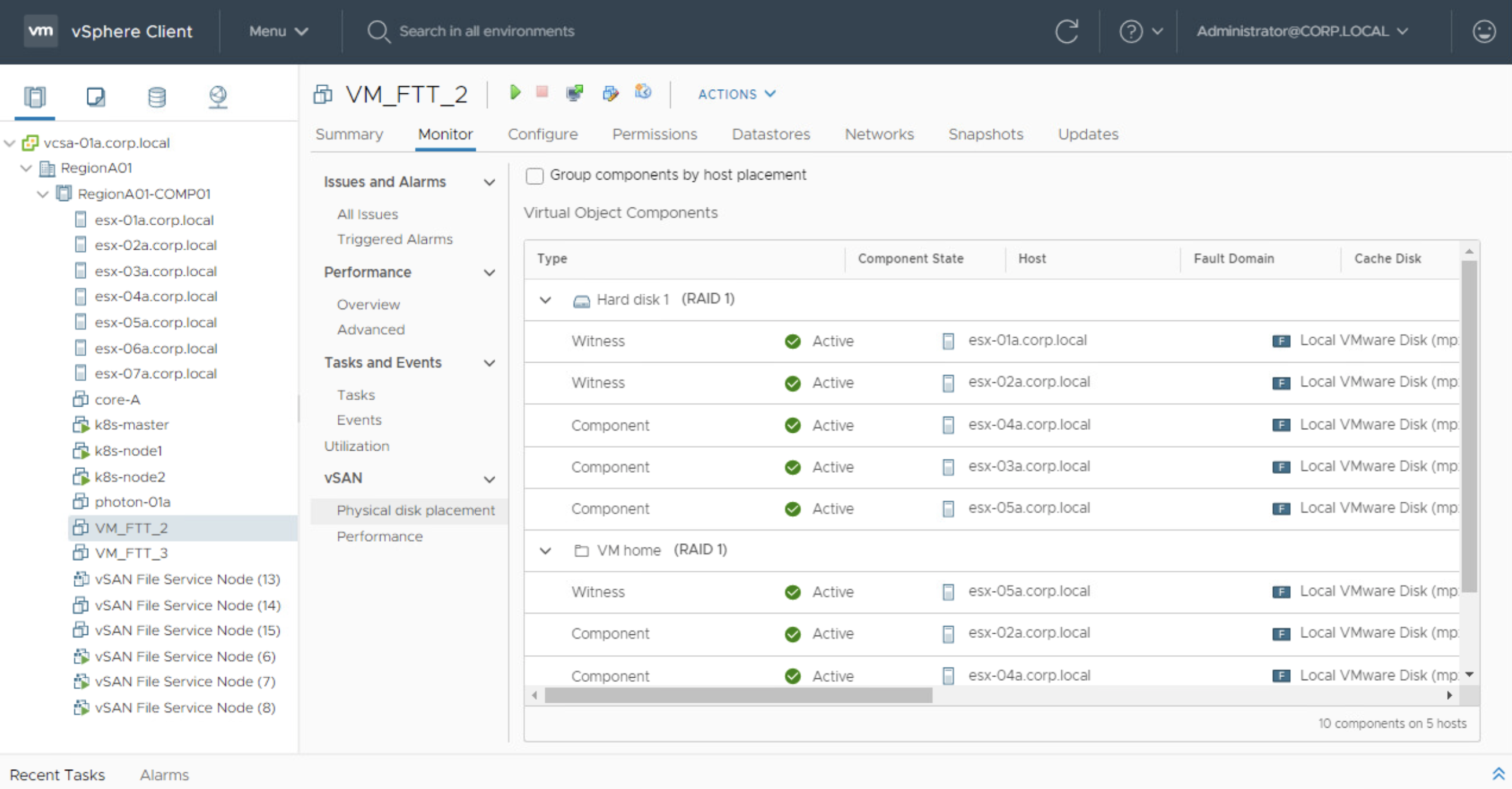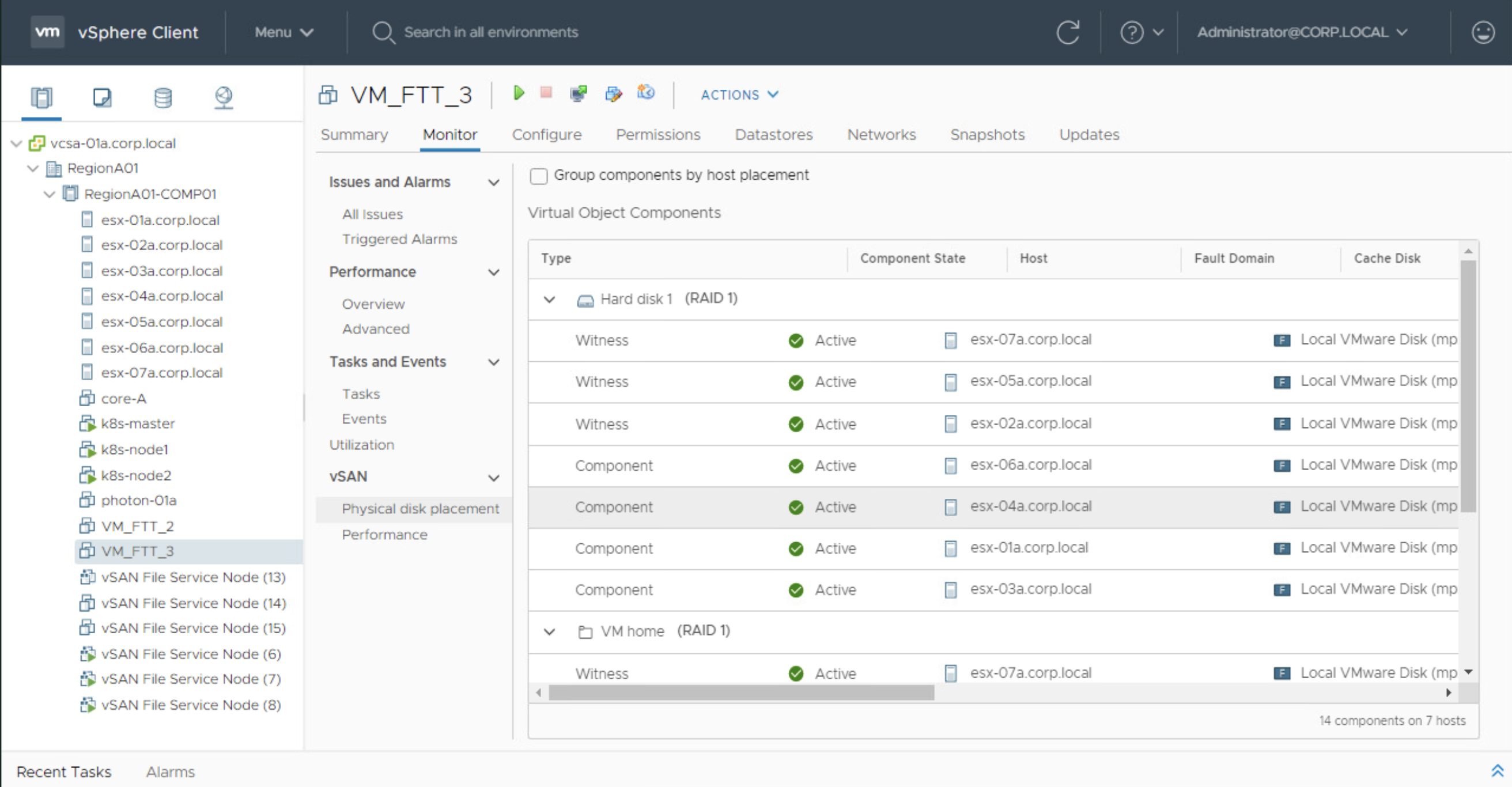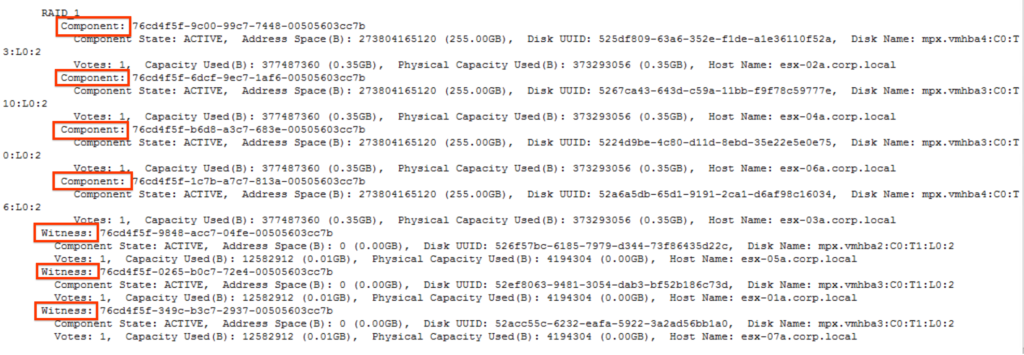Some time ago we looked into a rare case where a vSAN object (VMDK) with FTT-1 mirror SPBM policy didn’t require a witness component.
So usually with FTT-1 mirror policy we have two components of the object and a witness component. What do you think happens with a witness component when instead of FTT-1, FTT-2 SPBM policy is assigned to an object ? FTT-2 means our object can survive a failure of its two components. For a VMDK object it means there will be three copies of this VMDK and two can be inaccessible without affecting VM’s I/O traffic.
For FTT-2 there will be more than just one witness component…
A VMDK will have three copies + 2 witness components. That is why FTT-2 policy requires minimum of 2n+1 = 5 nodes / ESXi hosts. And any two out of 5 can be inaccessible without affecting the service.

How about FTT-3? FTT-3 means our object can survive a failure of its three components. For a VMDK object it means there will be four copies of this VMDK and three can be inaccessible without affecting VM’s I/O traffic.
A VMDK will have four copies + 3 witness components. That is why FTT-3 policy requires minimum of 2n+1 = 7 nodes / ESXi hosts. And any three out of 7 can be inaccessible without affecting the service.

esxcli vsan debug object list is a command that can be used to list the components of the object , here is how it looks for a VMDK with FTT-3 SPBM policy:

